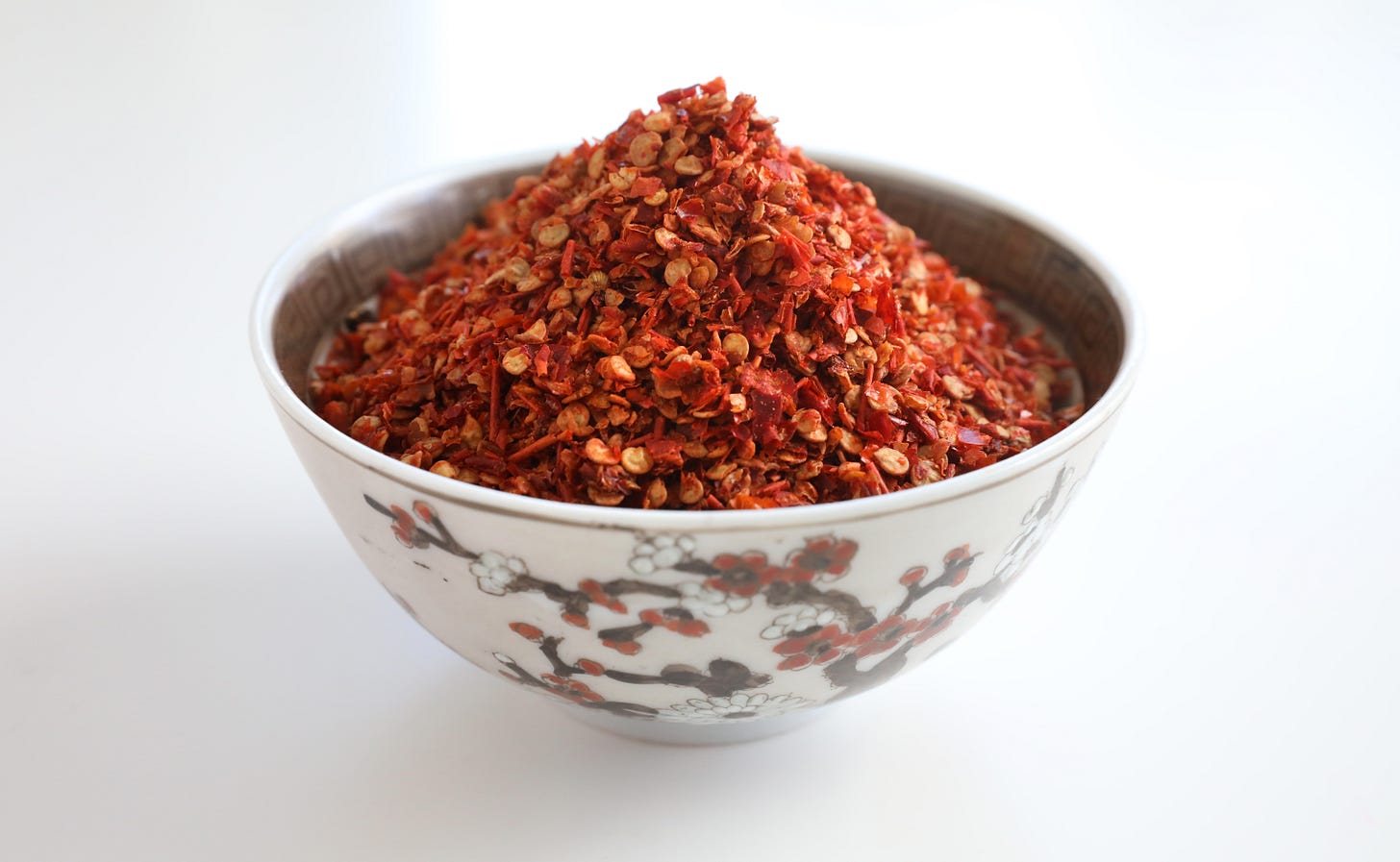I make a lot of hot sauce, in several forms, using a variety of fermentation methods which I’ll cover in subsequent posts. For today, I want to talk about what happens after I blend and strain those sauces, removing the skins and seeds and leaving the liquids smooth and sexy (and easy to shake out of bottles equipped with a dispenser spout or similar).
Depending on the volume of sauce, you might end up with a significant amount of solid byproducts. If you watched our most recent video class (video going up here next month), I demonstrated two methods using two small jars of sliced red chiles from my garden: one lacto-fermented in a 3% brine, the other macerated in vinegar. As I mentioned in the class, after about a week I blended them both together, along with a few larger jars of other ferments from last summer that have been aging beautifully.
After straining the mixture, I spread all the solids out on a silpat and put that on a baking sheet in my toaster oven set to dehydrate at about 120˚F for about 36 hours until they were fully dry. At that point I blitzed them in the food processor until they had the consistency of pizza-place pepper flakes as you see above. Unlike those generic flakes, which are often old and stale and have no flavor and unreliable heat, these are vibrant, tangy, hot, and a little salty—absolutely delectable anywhere you want to sprinkle them.
My gallon of hot sauce yielded a pint of this powder. I you want to get all soigné, you can shake this through a sieve to get the chile kif, as it were, but I generally don’t bother with that step. And if you do sieve the powder, keep the seeds! You can use them to add heat to other ferments like kimchi. If you start thinking this way, catching the byproducts of your various ferments (like we did with pickle brine, for example) you can end up with a winder range of useful products than you ever imagined possible.
The trick is to lean into the qualities of the byproducts. In this case, seeds and skins are fibrous and tough, so drying and grinding them to a powder made the most sense in terms of creating a desirable texture. If you have a liquid left over from a different ferment, say, you could use it to make a secondary pickle like I did with those green tomatoes at the link above. Use your imaginations, and think about what else you have on hand in or around your kitchen.
Thinking this way means that my hot sauce process creates zero waste—like, none. That’s fine in principle, but in practice I also have a jar of seriously tasty pepper flakes: a seasoning I’ll use and enjoy every bit as much as the hot sauce. This represents the very definition of win/win, and it only involved a few more minutes of effort.


